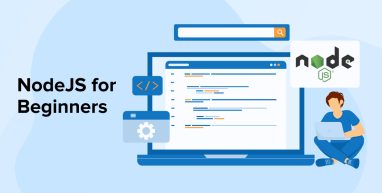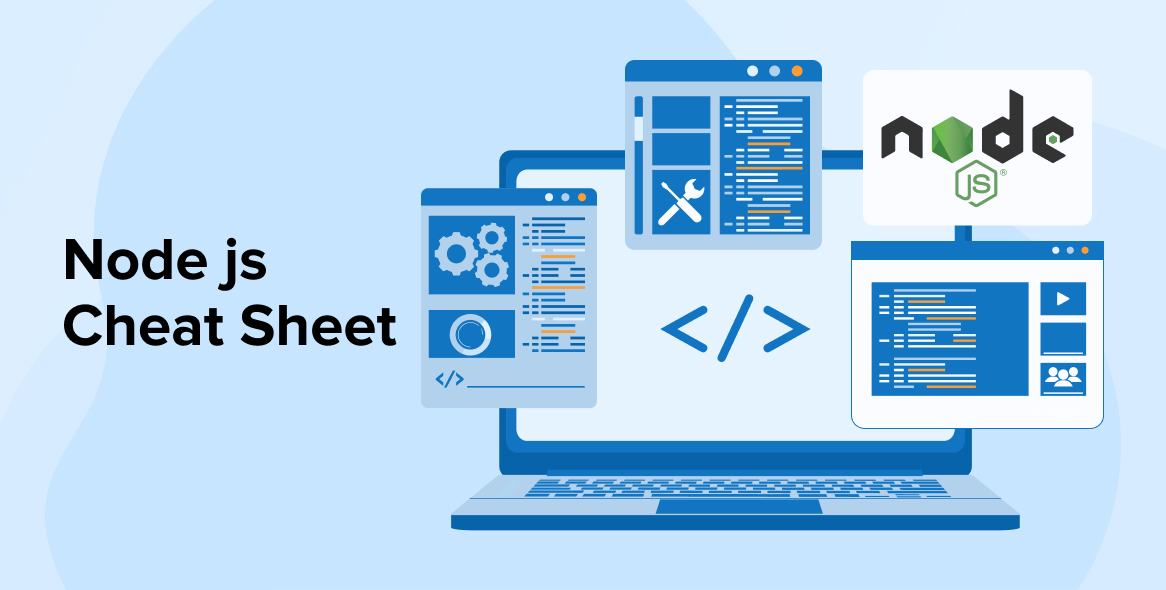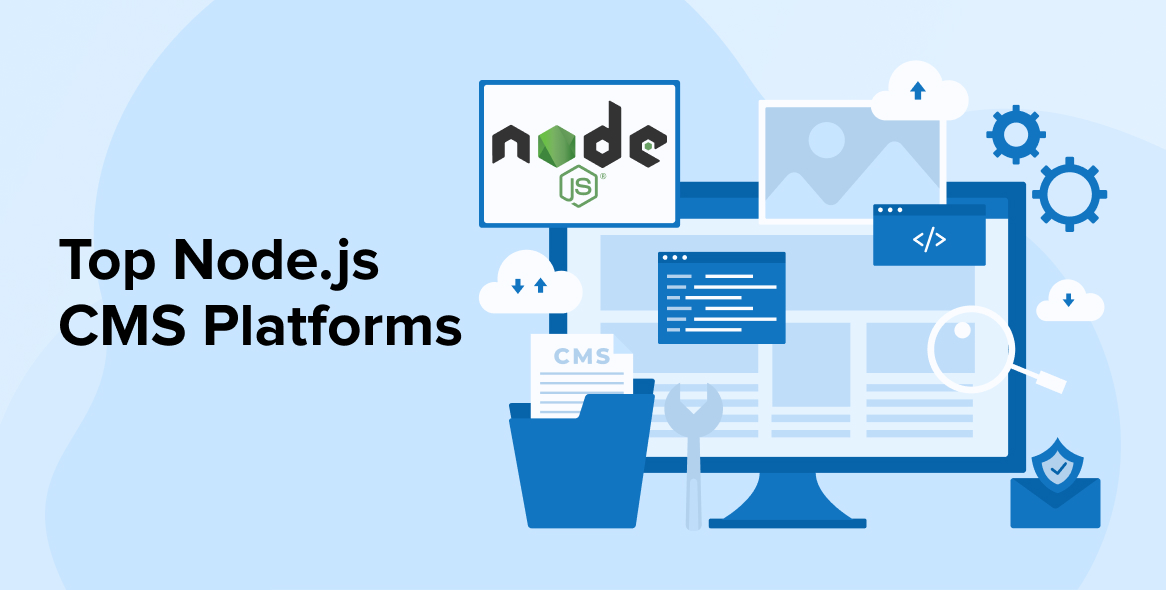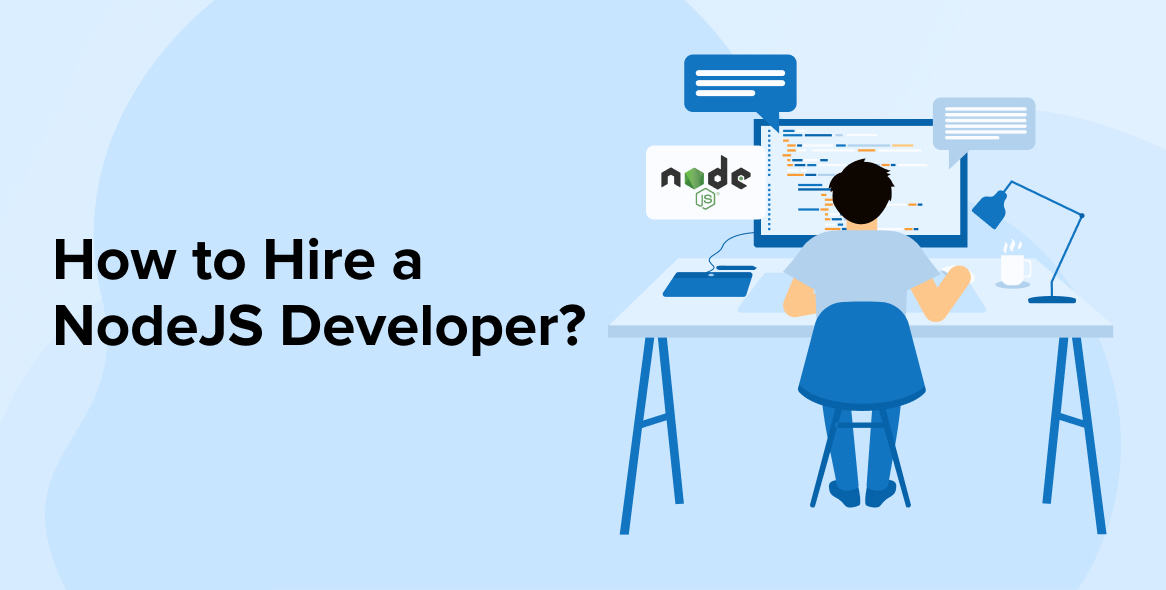
Node is now the trendiest technology on the planet. It is the ideal skill set for any software engineer looking to further their career. You may create a variety of modern web applications, including social networking applications, multimedia chat systems, real-time tracking programs, digital games, and collaborative tools. Numerous firms, including Paypal, LinkedIn, Uber, Yahoo, Medium, GoDaddy, Groupon, and Walmart, have migrated to NodeJS.
All of the aforementioned factors should convince you of NodeJS’s popularity among programmers and the importance of following node.js best practices. The dilemma now is how to learn Node. Which subjects should you encompass? What are NodeJS frameworks and which one is recommended as a popular framework for beginners? Is it necessary to understand all of the principles from a book, or should you use an online tutorial?
Remain calm, take a big breath, and we’ll walk you through each step and provide you with a comprehensive path to becoming a NodeJS developer.
1. Introducing Node.js
Node.js was released in 2009. Prior to Node, Javascript was quite considered a prime technology across the globe. So, what were the circumstances that triggered the need for Ryan Dyal to create Node.js?
We all know how Javascript is used for client-side scripting, unfortunately, the tech didn’t succeed much in the server-based application development space. And this is where Node.js comes in. Node.js is an open-source cross-platform runtime environment built on Google chrome’s Javascript engine (V8 Javascript engine-same engine as Google chrome) to execute Javascript code outside the browser. When you follow the best practices of Node.js, this platform offers an innovative range of features and functionalities that aid to a great extent while programming on the server.
Let us have a basic understanding of some of the major milestones of the web development framework.
- In the year 2009, Node framework was released in the market, and the first version of the npm node package manager was created.
- In 2012, After Express and Socket were being introduced, several companies like LinkedIn, and Uber started implementing and showed the will to learn Node.js. As a result, a widespread effort to learn Javascript and a huge active community was formed.
- In the year 2015, The Node.js Foundation was formed, io.js which was merged back into Node.js, and simultaneously Node.js 4.0.0 was released. Here, npm or node package manager was introduced with a few private modules.
- In 2018, Node.js 10 was introduced, featuring a bunch of built-in modules along with ES modules.mjs experimental support.
1.1 Advantages of Node.js
Lets explore some of the advantages of Node Js:
- Open-source NPM repository – With over 60 thousand available modules, Node.js has this online repository called NPM repository that allows open-source library functions for all types of ready-made applications.
- Scalable Systems – Nodes are pretty easy to scale. In fact, a plethora of sections can be deployed to different servers. Not just horizontally, such systems can also be scaled vertically. All it takes is a cluster built-in module.
- Microservices – Of course, it’s worth mentioning that a lot of companies are found to migrate to Node.js.
- Single Programming Language – Can you name one of the most popular programming languages used worldwide? Javascript. Have you ever wondered why? Because it can be used for the back-end programming as well and at the same time succeeds in enhancing the app’s maintainability. Gone are the days when businesses were compelled to hire two programmers, one for the backend and the other for frontend but with Node framework, one professional is enough. Simultaneously, this saves ample time, energy, and money in building apps.
- Non-Blocking I/O Paradigm – Another major problem in I/O operations is waiting for a response. Node technology is single-threaded so while you are waiting for a database query it will block all the server-side web applications. As a result, it is advisable for server-side javascript developers to use a non-blocking, rest API. Do you think that the work of thread is accomplished here? Nope, it can be used on another task. As soon as the I/O operation is accomplished, you will get notified easily. All In all, it improves efficiency.
Above all, Node reduces the time to market. Now, do you think it is enough for businesses just to have a great idea for a web development project? Not really, getting verified by the market is equally important. With Node.js you can come up with a very fast MVP to accelerate your development process.
2. Getting Started On How to Learn Node
Now since we have covered what Node is and how is the js extension beneficial, It’s time to learn all the aspects in detail (This section is to help developers to understand the node better). Here We have listed a few topics which can be referred to at any time whether it’s to learn Node.js or for mastering.
2.1 Node.js Architecture
Node.js uses Single Threaded Event Loop Model Architecture. Unlike other programming languages, Node is not just single-threaded, but event-driven architecture. As a result, developers can easily handle a wide range of clients simultaneously.
All the features offered by Node Architecture:
- Request – Incoming request can be categorized into both blocking and non-blocking,
- Node web server – Whether it’s about processing the requests or taking requests from the end-users, and even returning the responses to the corresponding users, the server-side platform takes care of everything here.
- Event Loop – the event loop in Node not just stores incoming client requests but also intimidates javascript code.
- External resources – External resources such as computation, data storage are used to block client requests.
Overall, before you learn Node.js it is important to know that the programming language can handle multiple concurrent client requests/ concurrent connections in a quick and easy manner, without the need of creating multiple threads.
2.2 Installing Node.js
Next step after you learn Node.js is installing. This is one of the simplest procedures you will come across. Visit the official site and download the latest version (as node.js is an open-source framework it is available to any developer). But before you even begin with the installation of Node.JS framework, just make sure your RAM carries at least 4 GB of free space.
2.3 JSON File
Popularly stands for Javascript Object Notation. JSON is a text format mainly used to store and transport data. More or less JSON is self-describing and is easy to understand. Try to create any Node.js application or web applications, we are sure you need to get this thing right or you may end up losing your first project. The lightweight data-interchange format is to send and receive data between computers.
Now you must be wondering why to use JSON. First and foremost, it is quite similar to the Javascript codes. This also means it can be easily converted to javascript objects. And since the format is text.JSON, the data will be easy to use.
JSON.parse() |
JavaScript comprises of a built-in function.
JSON.stringify() |
This is mainly used to convert an object into a JSON string.
So node.js application developers can receive or send a Javascript object in the pure text form . Also, it is easy for developers to work with data as JavaScript objects, as there is no point in translating.
2.4 NPM (Node Package Manager)
Next, we have the command-line interface tool NPM (Node Package Manager). The tool here does various tasks such as installing, updating as well as uninstalling Node.js packages. It may quite interest you to know that this one acts as an online repository for open-source Node.js packages.
NPM performs the operation in two modes: global and local. At one end, i.e. In the global mode, NPM performs operations whereas, on the other hand in the local mode, NPM performs operations for the particular local directory So what is the difference between the two, well in the first option, all Node.js applications present on the computer are affected whereas, in the second option, only the application located in that specific directory are being affected.
2.5 Web Server Basics
This is where you get your feet wet with Node.js scripting. To execute ‘Hello World’(which is a common and simple example) in Node.js, it is very important for one to have a basic understanding of variables, data types, operators, functions, etc.
Applications and companies which are using Node.js are eBay, General Electric, GoDaddy, Microsoft, PayPal, Uber, Wikipins, Yahoo!, and Yammer just to name a few examples.
2.6 File System
The node comprises an fs module, mainly used to access a physical file system. The fs module conducts asynchronous or synchronous file I/O operations. And since you have accomplished the fundamentals of Node, you are all set to create and execute all the basic programs and code.
After this, your next step is to read and write data into a file. You should avoid working on the console.
2.7 Events
Since we all know that Node.js applications are event-driven. And speaking of Node technology, the event is quite similar to the callback function here. The only difference is that the callback function is executed only when the asynchronous function returns node and provides an event module that is used to create and execute custom events.
2.8 HTTP Modules
It may be quite interesting if you know that Node has a built-in module known as HTTP, this one allows Node.js to transfer data over the HyperText Transfer Protocol (HTTP). It is mainly used to develop server-based applications. Using the HTTP module, REST APIs can be created seamlessly.
2.9 Frameworks
Express.js, AdonisJs, Meteor.js, NestJs, Sails are some of the best and most used frameworks of Node technology. Gone are the days when developers were found writing codes for each function right from the scratch. And since all this was pretty time-consuming, Node.js came up for a rescue. Numerous frameworks options have helped developers and programmers to conduct faster application development with better features.
2.10 Databases
MySQL, MongoDB, Cassandra, Oracle, and CouchDB are some of the most renowned databases that will certainly assist you in developing a fully functional web application with Node.js.
3. Ready to Start with Node.js?
Numerous Node.js tutorials omit instructions on how to ultimately launch (publish) a Node.js application. Often, these tutorials just quit after the fundamentals.
While you may run your program locally, this makes little sense if you want to promote it with others. Heroku is a free platform for hosting Node.js applications. You can easily follow along with the right instruction. The subscription model at Heroku lacks several capabilities, such as the ability to utilize your own domain.
Another option for deploying a Node.js application is to use a dedicated http server with Plesk as the administrative software. These servers are already accessible for less than ten euros per month and are ideal for design, debugging, and even production!
4. Summary
Although Node.js demands additional effort, the result of a speedy and resilient application is well worth the effort. If you’re not interested in doing everything at the lowest level, you may always use a framework, such as Express, to make application development easier.
Node.js is an exciting technology that is an ideal choice for applications with a high load. Corporations such as Microsoft, eBay, and Yahoo have demonstrated this. If you’re hesitant about hosting your website/application, you may always utilize a low-cost virtual private server (VPS) or one of the many cloud-based services available, such as Microsoft Azure or Amazon EC2. These web servers offer reasonably priced scalable settings.






Node has widely been adopted by top companies around the world and If you go by this trend then there would be a lot of demand for Node Js developers in the near future. Now the question that may arise is where to get started learning Nodejs. After reading this blog I was able to get answers to most of the questions. Thank you for the blog.
NPM stands for Node Package manager and it is the largest package manager for JS programming language, it contains 8 Lakh+ open source packages of code. NPM helps in allotting JS code to web and Mobile applications, making the improvements possible without deleting or updating the apps.
I loved this article! It's a perfect read for someone who is just starting with Node.js. The article described every aspect of Node.js.